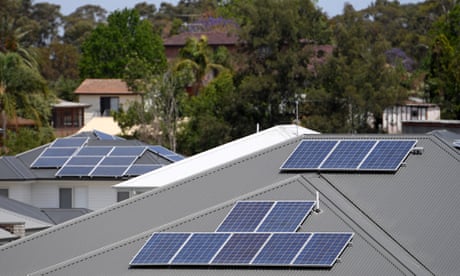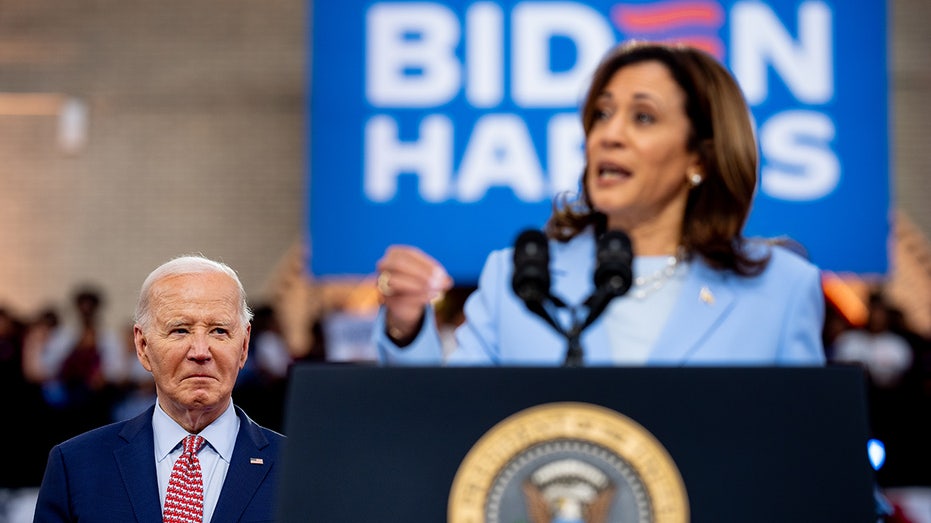- by foxnews
- 14 Mar 2025
Record renewables help bring down Australia’s energy prices and emissions
Record renewables help bring down Australia’s energy prices and emissions
- by theguardian
- 28 Apr 2023
- in news

Australia's record levels of renewable energy helped extend the slide in wholesale power prices in the first three months of 2023, displacing fossil fuels and sending carbon emissions from the sector to new lows for the first quarter.
The latest energy dynamics report by the Australian Energy Market Operator (Aemo) showed wholesale spot prices in the national electricity market (NEM) averaged $83/MWh, down more than a 10th from the December quarter and two-thirds lower than the record average $264/MWh in the June quarter last year.
Rooftop solar output alone averaged almost 3GW for the March quarter, up 23% from a year earlier. That increase contributed to a drop in "operational demand" in the NEM to an average of 14.38GW, or the lowest since 2005. Low demand records were set in Victoria, New South Wales and South Australia.
"Growing renewable output across the NEM helped drive a first-quarter record with 12% of dispatch intervals having negative or zero prices," the Aemo chief executive, Daniel Westerman, said. "Between 9am and 5pm, wholesale electricity prices were negative in South Australia and Victoria 60% and 55% of the time, respectively."
Gas, typically the most costly fuel for electricity generation, provided its smallest first-quarter share of supplies since 2005. Overall gas demand in eastern Australia fell 9%, with domestic consumption dropping to its lowest for any March quarter since 2016, Aemo said.
Aemo's quarterly energy reports offer snapshots of the electricity sector's trajectory. Rising energy costs in the past year have been one propellant for inflation, while supply has arguably become less reliable as ageing coal-fired power plants close or break down.
However the pace of renewable energy's advance, according to the Clean Energy Council, is not yet sufficient to meet Australia's emission goals
Last winter, authorities suspended the NEM after a cold snap and power station outages strained the grid. Wholesale prices also spiked in February and March in northern regions during late-season heatwaves, revealing shortfalls even after three relatively mild summers in a row.
Renewables continue to expand their share of the market, cutting emissions from electricity generation in the process.
New and recently commissioned grid-scale solar and wind units lifted generation by an average 330MW and 134MW, respectively, Aemo said. Output averaged 4.65GW, or 11% more than for the March quarter of 2022.
For a half hour on 5 March, renewables supplied 65.8% of NEM generation, a record share for that quarter, topping the previous high set a year earlier by 4.4 percentage points.
NEM emissions both in total and per MWh declined to record lows for the first quarter of the year. Electricity makes up about one-third of Australia's carbon pollution, the largest share of the economy.
For the quarter, emissions totalled 28.8m tonnes of CO2-equivalent, down by 5.1% from a year earlier.
Coal and gas-fired generation dropped 710MW over the year. Gas shed 20%, or 280MW on average from a year ago, to 1.113GW. Black coal-fired generation output eased 1.3%, or 137MW, to about 10.5GW, while brown coal dropped 7.4%, or 293MW, to 3.65GW.
The federal climate change and energy minister, Chris Bowen, said the report showed the government's energy price relief plan to cap gas and coal prices in December had "delivered a near-halving of electricity future prices, which are a big factor on future energy bills".
Future prices for the mainland states in the NEM for the 2023-24 financial year peaked at $230/MWh in the December quarter, before ending 2022 at an average $102/MWh, the report said.
However, while those future prices averaged $107/MWh during the March quarter, they ended the month on the rise.
New South Wales, which will see the Liddell coal-fired power plant close on Friday, posted the largest rise at 31% among the states to $145/MWh.
Queensland's future prices rose 26% to $126/MWh and Victoria's 25% to $96/MWh, while South Australia's was little changed for the quarter at $113/MWh.
Separately, NSW regulator IPART will lift the price paid to households exporting surplus solar power to the grid by as much as 89%, reflecting higher wholesale electricity prices.
Exporters will receive 7.7 to 9.4 cents/kWh in 2023-24 from their electricity retailer."Wholesale prices have increased significantly over the last year, mainly due to the war in Ukraine which has led to higher gas and coal prices and disruptions in several large coal-fired power plants," IPART chair, Carmel Donnelly, said. "IPART's feed-in tariff benchmark is up from around cents this time last year."
The last big increase was in 2017-18, when IPART effectively doubled the benchmark feed-in tariff.
- by foxnews
- descember 09, 2016
Southwest flyers fire back over airline ending free checked bag policy: 'Nail in the coffin'
Southwest has customers sounding off after the airline announced an end to its checked bag policy, leading some flyers to say they'll "boycott" the airline.
read more


